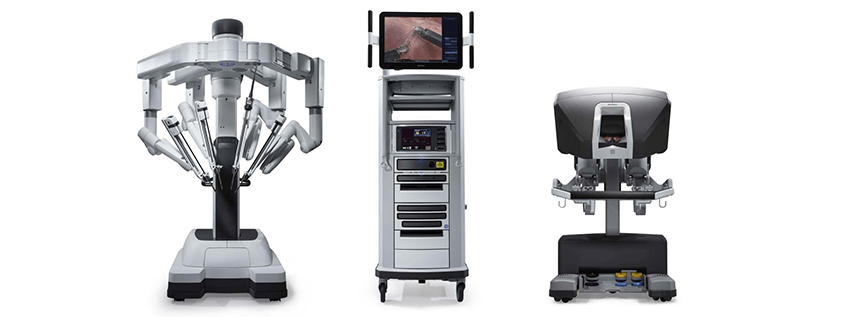Robotic Surgery News
Get the latest News and Updates about Dr. Brian Harkins Robotic Surgery, Case Observations, Procedures, robotic surgery procedures, and more.
VOTE for Dr. Brian Harkins for the Next Living Magazine #BestOf2019
There’s no doubt there are plenty of quality surgeons in the Houston area. But Dr. Brian Harkins has found plenty of ways to not only stand out as a skilled surgeon but also as someone who remains fully focused on making the medical community and his region a better place.
Dr. Harkins is considered one of the top laparoscopic surgeons in the country and has helped thousands of patients for more than 30 years by treating them for a wide variety of diseases and conditions, from cancer to hernias. He also is a pioneer in the area of robotic surgery, which offers health care providers even more tools to help patients and minimize their pain and recovery time.
When filling out your ballot for Living Magazine’s “Best Of” for 2019, consider voting for Dr. Harkins in the “Top Doc” category. Each year, thousands of readers vote in the annual survey of favorite people, places, and things in our community. Sometimes only a few votes end up separating the finalists, so this is why every vote is critical!
Dr. Harkins, an Air Force and Army veteran and father of four, has been living and performing surgery in Texas since 1997. He’s an independent affiliate of the Surgical Advanced Specialty Center since it opened its doors in 2002, and helped design and build its current office in 2003. He’s held multiple leadership roles there over the years and currently is a member of the facility’s board of directors. He’s also the chair of the robotics committee at Tomball Regional Medical Center and a fellow at the American College of Surgeons.
Part of his specialty is robotic surgery, using the innovative da Vinci Xi robotic system, which is a small surgical device that a surgeon controls remotely. The robot can reach areas and perform precise tasks in areas that are sometimes difficult for human surgeons to reach easily. This can lead to better outcomes as well as smaller scars and shorter recovery time
The Tomball location is the first facility in the area with two da Vinci Xi robots. It has also served as an observation site for surgeons around the country wanting to see the da Vinci Xi robotic system in action, and Dr. Harkins also serves as a proctor for other surgeons wanting to train on it.
Dr. Harkins was born in Tennessee and married his high school sweetheart in 1978. They have four children.
His military service first took him to North Dakota where he was a nuclear missile mechanic during the day and studied at night. He later transferred to LSU in Baton Rouge, where he earned his Doctor of Medicine and the Dean’s Award in 1989.
Following graduation, Dr. Harkins began a general surgery residency at Eisenhower Medical Center in Augusta, Geo. There, he was honored with the award of “Outstanding Laparoscopic Resident-Surgeon,” and was commended for a scientific presentation from Georgia’s chapter of the American College of Surgeons. He later received the Outstanding Graduating Resident Award along with the Army Commendation Medal for Meritorious Service for his role as the chief of the Department of Specialty Care at Noble Army Hospital.
After retirement from the military, he moved to Texas in 1997, where he and his family have enjoyed living ever since. He’s been interested in robotic surgery so he found a way to bring it to the Tomball area. He and his staff offer a comfortable and friendly setting, which appeals to patients from around the country.
When he’s not helping pioneer the future of robotics to help health care, Dr. Harkins enjoys spending time with his family, building things and the outdoors.
He’s honored to be listed among the other nominees for Living Magazine’s “Top Docs Showcase,” and appreciates everyone who votes for him.
Casting a vote is as easy as visiting www.livingmagazine.net/. The deadline to submit ballots for 2019 is 12 A.M. March 15.
Robotic Surgery – Colectomies, Inguinal, and Incisional Hernias Following the Path of the Prostate
The Lesson From the Robotic Prostate
In 2003, prostate surgery was an open procedure. Only 1% was done laparoscopically and 4% was done robotically. The interesting thing about that is that in 2003 we were 15 years into the laparoscopic era while only 3 years into the robotic era. Yet, already four times more procedures were being done on the robot than laparoscopically.
Something about this new minimally invasive platform made it work for complicated surgery that couldn’t be duplicated on the mature laparoscopic platform. Many urologists recognized these benefits and a new gold standard emerged.
By 2013 robotic prostatectomy was clearly the new gold standard. Hysterectomies for malignancy have also seen this transition to a new standard. (Premier Data 2003, 2005, and 2013) These procedures represent a recurring history lesson where open surgery predominance was replaced by robotics completely bypassing any sort of laparoscopic phase for the procedure.
In 2013, despite being 25 years into the laparoscopic era, colectomies and incisional hernias both have seen only about a 1/3 penetration of laparoscopy despite proven benefits for patients.
The latest robotic advanced platform, the Da Vinci Xi, shows promise to finally take colectomies, inguinal hernias, and incisional hernias along the path of the prostate to a new gold standard as a robotic surgery!
“Fly” thru the abdominal cavity, please click here
Twenty-Fold Growth in Robotic Inguinal Hernia Repairs
In 2013 the inguinal hernia repairs are done robotically accounted for only about 1% of all an inguinal hernia repairs. Just three years later the robotic approach now accounts for close to 20% of all inguinal hernia repairs.
This phenomenal growth has been fueled almost completely by the surgical community. Hernia thought leaders throughout the surgical community have recognized the increased capabilities of the robotic system allowing a dissection with more precision and less pain. This is in part due to the increased dexterity of the wristed instruments and to the incredible 3-D magnified high-resolution view of the robotic system.
Many studies in this emerging era of robotic hernias are showing improved quality metrics, patient satisfaction, and improved total cost of care and value over other techniques.
Dr. Harkins Shares His Experience with Colleagues
This past October the American College of Surgeons held its annual national conference in Washington DC. Dr. Harkins was honored to have the opportunity to share his experience with his colleagues in a guest lecture event where he chronicled his adoption of the “emerging” standard of laparoscopy in the 1990’s and how that closely parallels his, and the surgical community’s, current adoption of the new emerging standard for robotic surgery.
He continues to provide surgeons across the US with case observations, proctoring and acts as a colon and hernia robotics course instructor on a regular basis. In a separate event, Dr. Harkins will return to Washington DC as a guest instructor for the World Wide Sales Meeting of Intuitive Surgical.
He will lecture on robotic right hemicolectomies and then help the attendees experience the performance of the procedure on an issue model. While he enjoys sharing his experience with his colleagues, Dr. Harkins is most pleased to provide the latest in advanced surgical care available today to the patients of northwest Houston!!!
Dr. Harkins is recognized as a world leader in experience using the Da Vinci Xi system in General Surgery.
Single-Site Surgery… Performing Complex Surgery Through a 1-inch Incision!
Another First for Tomball Regional Medical Center
As proven leaders in robotic surgery, Tomball Regional Medical Center and Dr. Brian Harkins has accomplished yet another milestone!!! Single-Site surgery on the Da Vinci Xi robot premiered at TRMC on May 4, 2016. Dr. Harkins accomplished the first Single-Site cholecystectomy on the Xi in Houston… in Texas… and one of the first ten in the country.
The FDA recently released approval for the technology to be applied to the Xi platform which allows gallbladder surgery to be done through a single one-inch incision at the umbilicus. Currently, the approved surgeries are Cholecystectomy, Oophorectomy, and Hysterectomy. As experience grows and technological advances continue, expect more and more surgery to be done through ever decreasing incisions!
While one could expect to pay a premium for this state of the art technology the reality is that the cost is ever less than the robotic multiport equivalent. Dr. Harkins is currently seeking patients to assess if they are candidates for Single-Site on the DaVinci Xi. In fact, as of press time for this newsletter, it’s the only place you can get in Houston!
Houston Technology Turns Hard to Easy… and Safe
Some of you may recognize the term Single Site or Single Port. The concerted effort to introduce this approach into laparoscopy began in 2007. Studies proved it safe and effective. The increased degree of difficulty in doing the operation, however, resulted in limited penetration into the field of surgery.
Placing 3 instruments and a camera through once trocar and trying to find enough room to manipulate all of that in close quarters was challenging at best. Not to mention that the limited working room required the instrument on the left of the screen and visa-verse for the other hand. It was kind of like operating looking into a mirror while playing Twister! No wonder it didn’t catch on as expected. But if you connect all the instrument to the robotic platform then Presto… hard becomes easy.
The robot is designed to manage the tight quarters and the computer adjusts the view for the unnatural angles and visual associations. The older model DaVinci Si was the first robotic platform to have this but many surgeons had limited access to a robot making that the rate limiting step for adoption. Robots are increasingly more available and general surgeons are quickly adopting the platform. Couple this with added safety in identifying the ductal anatomy using Firefly visualization (see side panel) and it’s easy to see how the future of minimally invasive surgery is the header in “1” direction. 1 incision, 1 inch long equals 1 happy patient!
“Fly” thru the abdominal cavity, please click here
Dr. Harkins Guest Lectures in Minneapolis
“One of the aspects I like the most about being on the cutting edge of technology in surgery is the ability to interact with colleagues across the country as the surgical community helps to shape this emerging standard” stated Dr. Brian Harkins in a recent lecture to surgeon colleagues in Minneapolis, Minnesota. He pointed out that the surgical community has seen this happen before.
The early 1990’s saw the emergence of laparoscopy as a standard practice in general surgery. Most laparoscopy prior to that was performed by gynecology. In less than a decade, laparoscopy became a gold standard in many procedures and general surgeons became the most prolific laparoscopists.
While urology and gynecology have lead the way in robotics since 2000, it’s the new advanced technologies and latest robotic platform, the Xi, that have opened the door for general surgery to perform an increasing number of complex multi-quadrant procedures. He concluded, “This is paving the way for robotic surgery to be the new minimally invasive standard in general surgery. You could say, its laparoscopy with a long overdue upgrade to advance technology!”
Dr. Harkins is recognized as a world leader in experience using the Da Vinci Xi system in General Surgery.







